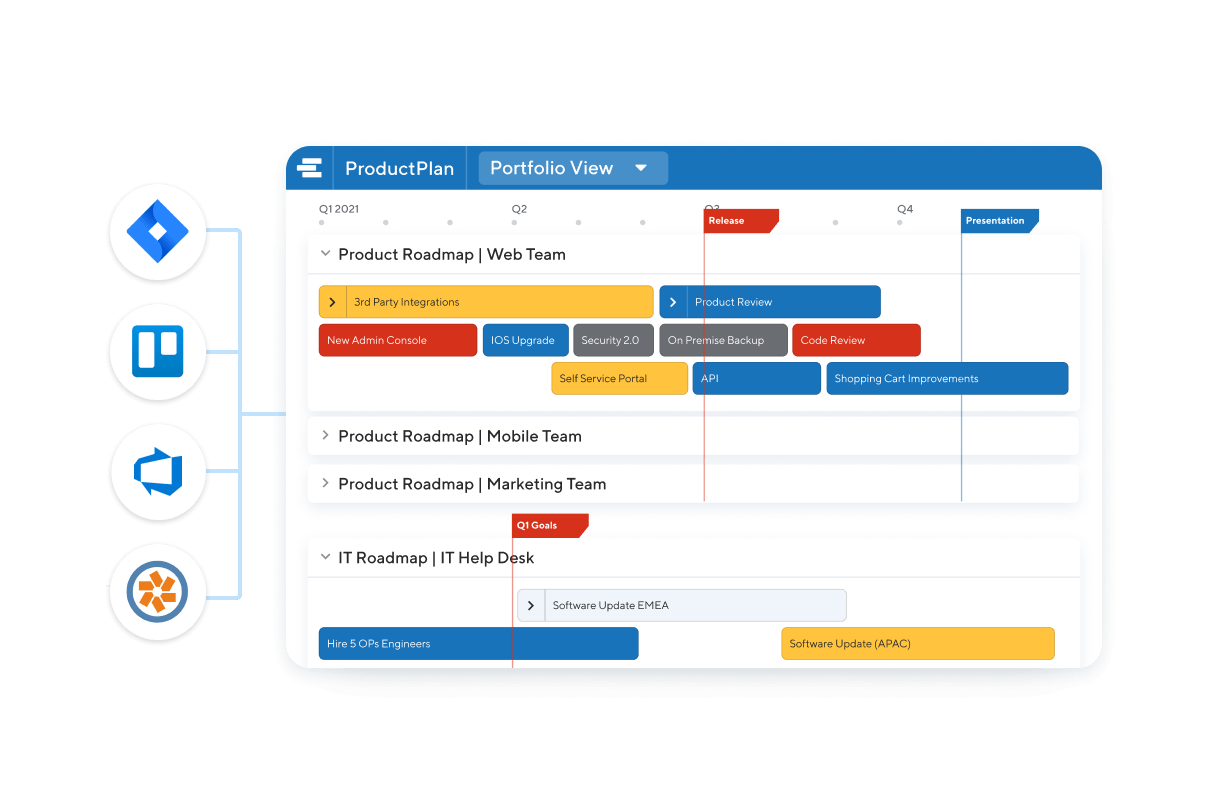As a product manager, you probably have enough to-do items, requests, and fires that need putting out to take up all of your time. That’s one of the big challenges of being a product manager — so many people from so many teams want your time that you can easily find yourself spending every day in reactive mode.
But that’s not the best use of your time. What your company, your colleagues, and your customers ultimately need from you is to be the strategic, proactive driving force behind your product. To do that, you need time — to think, to organize your priorities, and to be proactive.
Here are some suggestions for freeing yourself from reactive mode and finding the time and space to become a master product management planner.
1. Create a regular meeting with yourself to plan — and protect that meeting.
You might have heard this suggestion before, but it’s worth a refresher. Often, product managers and working professionals, in general, give priority to meetings or requests from others over everything else.
If a product manager needs quiet time to think through her priorities, or just to plan her week, but she has a meeting coming up — even an unimportant one — she’s likely to prioritize attending that meeting, reasoning that she can always sit down and do her planning later.This is why you should schedule regular time for yourself to sit quietly, review your priorities, plan your day or week, look over your product roadmap, and otherwise think proactively about what you need to do to make your current initiatives successful.
Put this meeting with yourself on your calendar. Make it real. Give it a name — maybe something like “Strategic Planning Hour.” If your company runs a shared calendar, and your colleagues can see that you’ve blocked this time off like any other meeting, that’s even better. They’ll know not to disturb you during that time.
We are so hardwired today to think of our workdays only in terms of “hardscape” — conference calls, meetings, appointments — that we tend to think of those as the only real items on our agenda. But planning, thinking ahead, strategizing and being proactive are at least as important. So put those things on your agenda, too.
2. Schedule your strategic meeting with yourself — or whatever is most important to you that day — as the day’s first item.
In the great productivity book Two Awesome Hours, author Josh Davis, Ph.D., offers an important insight you’ve probably never heard. The executive functions of the brain — those mental processes you need for complex tasks like problem-solving and planning — are in finite supply each day. (You replenish them each night when you sleep — another good reason to get your eight hours each night.)
Think of these executive functions as your mental energy. When you spend your morning tackling all of those nagging to-do items or requests that are strategically insignificant, you’re using up your day’s limited mental energy on the small stuff. Which means that if you wait until after lunch or the end of the workday to have your brainstorming session, or to sit quietly and plan, you’ll be doing so with your executive function on empty.
The solution, then, is to schedule your most important or strategically advantageous item — brainstorming, reviewing the product roadmap, quiet time alone to strategize or plan — as the first thing on your day’s agenda.
In fact, Dr. Davis goes further in Two Awesome Hours, explaining that you should continue that process throughout the day. When you’ve completed your most strategically valuable task, you reach what he calls a “decision point,” a moment to choose the next most strategically valuable item on your list, and to tackle that.
This might sound obvious, but it’s actually counterintuitive for a lot of us. Consider how many times you’ve looked at your to-do list or your backlog and thought, “I can probably finish up these little items this morning, and that’ll give me some momentum for the afternoon when I can take on the big strategic items on my list.”
Wrong, argues Dr. Davis. When you spend blocks of your time on unimportant items in the morning, what happens in the afternoon is you find yourself less sharp and creative.
Every day, start with the most strategically valuable task or project. And repeat.
3. Review your product roadmap more often.
Product managers spend a lot of time reviewing and re-reviewing their to-do lists, backlogs, and calendars — but those all give us a more tactical than the strategic view. Or, if you prefer to think of it this way, your backlog is a more reactive document, while your product roadmap is more proactive.
One great way to become a better planner, and to stay strategic and proactive, is to review your product roadmap more frequently than you’re currently doing. If you are using the right application to build and maintain your roadmap, you will have a highly visual representation of your product’s current and planned themes, stories and features — color-coded to show you at a glance which strategic goals an item addresses, which resources will be deployed to complete it, how it affects other items on the roadmap, etc.

When you spend much of your time reviewing your backlog, you’re able to see only a narrow tactical view of your product’s development — what your developers are doing next, for example. Problem is, that doesn’t help you plan.
What will help you plan is to pull the camera back and take a strategic view of your product. For that, you need to be regularly looking at a visual, easy-to-understand product roadmap. Indeed, the more time you spend looking through such a roadmap, the more a bias you will develop for strategic-level planning and thinking.
Do you have planning tips for product managers? What strategies have worked for you? Please share them in the comments section.



